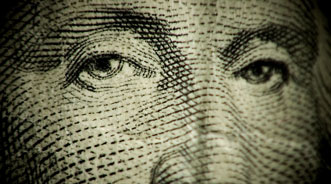As Borrowing Rises, Analysts Warn about Long-Term Threat to Auto Sales Growth

As the Federal Reserve discovered total consumer borrowing — including auto loans — accelerated by 8 percent in August, Fitch Ratings cautioned that industry enthusiasm should be tempered, as meaningful near-term risk remains as long as the U.S. fiscal cliff remains unresolved.
Fitch highlighted that improving consumer confidence, pent-up demand and widespread availability of financing have all helped drive U.S. auto sales beyond expectations earlier in the year.
"Should the combination of tax hikes and spending cuts come into force at year end, we believe it could lead to an unraveling of some of the factors that have clearly helped buoy the industry over the past couple of years," Fitch analysts conceded.
Fitch recapped that auto sales in September showed a nearly 13 percent year-over-year improvement.
And the Federal Reserve's data showed that in August, consumer credit increased at a seasonally adjusted annual rate of 8 percent. Revolving credit increased at an annual rate of 6 percent and nonrevolving credit increased at an annual rate of 9 percent.
All together, the Fed tabulated that total consumer borrowing jumped by $18.1 billion in August from July.
Comerica Bank chief economist Robert Dye cheered the borrowing movement but also approached with caution, similar to Fitch's analysts.
"Strong September auto sales, ongoing gains to home sales, lines at the Apple Stores for the iPhone5 all confirm a credit-fueled increase in consumer spending in the third quarter that looks like it will extend into the current fourth quarter. Improving credit availability in the presence of pent-up demand can work wonders for deleveraged households with improving confidence," Dye explained in his most recently weekly economic commentary.
"This healthy and appropriate re-leveraging has its limits however," Dye emphasized. "Fundamental improvement to household quality of life is driven by real disposable income growth, which comes largely through job and wage gains. As of August, real disposable income for the U.S. was 1.8 percent above its year ago level."
Dye believes there are three things that potentially threaten that gain: accelerating inflation, large tax increases and weak labor markets.
"Inflation looks sedate barring an oil market flare-up emanating from the Middle East. Tax increases in 2013, however, are already on the books unless Congress dials down the fiscal cliff. Labor market data is showing some improvement, but those gains remain vulnerable to the fiscal cliff," Dye stated.
And it's that fiscal cliff that has raised the attention of Fitch analysts most.
"Regarding the fiscal cliff, in our opinion, it is likely that all or some of the tax increases and spending cuts will be resolved or at least temporarily deferred," Fitch predicted. "With that said, the possibility of a non-resolution to the U.S. fiscal cliff could precipitate some detrimental knock-on effects for the auto industry that could potentially put the brakes on continued growth.
In its most recent Global Economic Outlook, Fitch projected that an unresolved fiscal cliff would push the U.S. economy into another recession and lead to a 3-percent cumulative loss of output by 2014.
"Tax increases would cause an immediate hit to a majority of American incomes, forcing consumers to practice spending restraint that would only be magnified when considering big-ticket items like cars and trucks," Fitch warned. "In addition, a tapering off in consumer confidence and an increase in unemployment would likely lead to further demand concerns for auto manufacturers, who would likely increase incentives in an attempt to prop up demand.
"We note that, although the pricing environment has held up well over the past several years, it could also change quickly should government spending cuts and rising taxes take effect," analysts went on to say. "Combined with the ongoing weakness in Europe and the slowing of demand in most developing markets, an unresolved fiscal cliff could severely hit U.S. auto manufacturers and parts suppliers just as they appear to be hitting their stride."

 View The Latest Edition
View The Latest Edition

